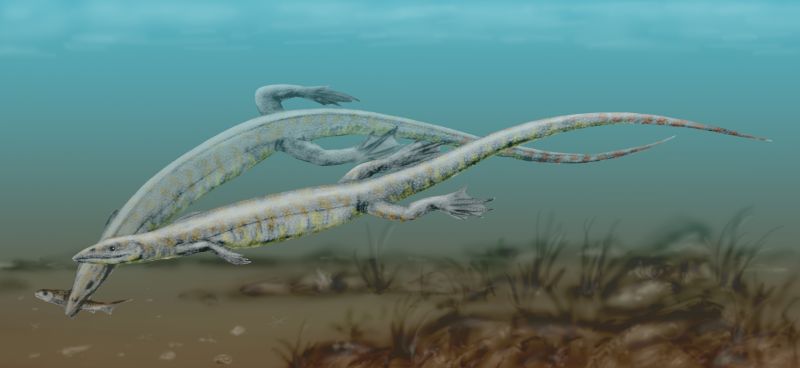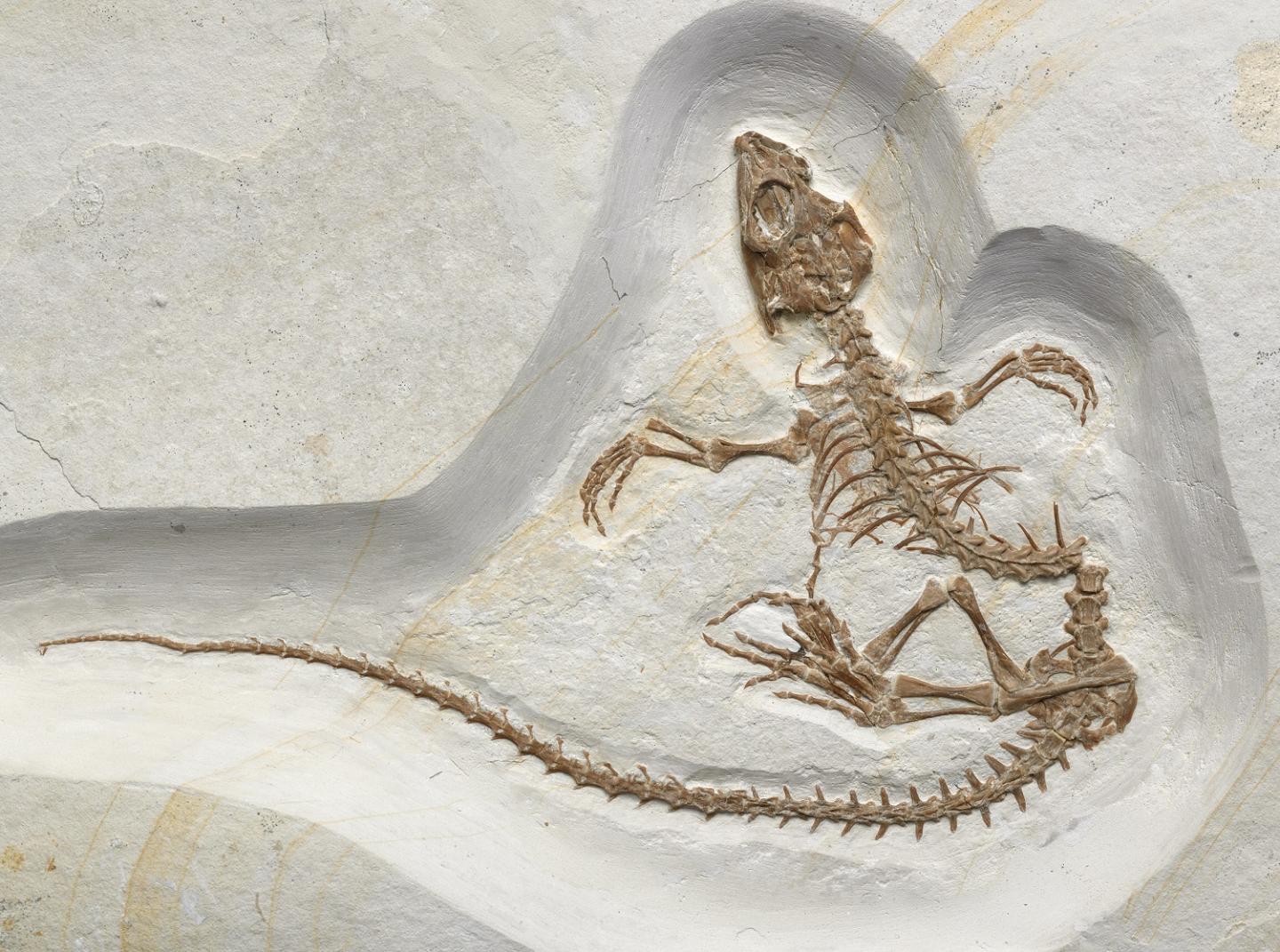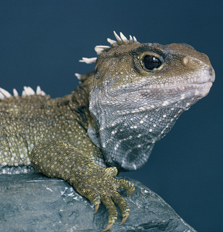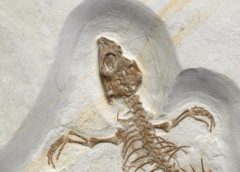A small Vadasaurus fossil reveals how some land-dwelling reptiles moved back into the water. Find out more and meet its modern relatives.
By Kate Stone
A small fossil—just a foot long—is revealing secrets of how some land-dwelling reptiles moved back into the water. After studying the 155-million-year-old reptile fossil, scientists at Johns Hopkins University and the American Museum of Natural History report they have filled in some important clues to the evolution of animals that once roamed land and transitioned to life in the water.
Vadasaurus, the Latin term for “wading lizard,” was discovered in limestone quarries near Solnhofen, Germany. The area was once part of a shallow sea that has given up many fossil finds. The animal had a long, whip-like tail, a triangular head, and large limbs, suggesting that it was comfortable both on land and in the water.
If you want to see the well-preserved Vadasaurus fossil, it is housed in the American Museum of Natural History in New York, where the job of unlocking its evolutionary secrets fell to Gabriel Bever and Mike Norell.
“Anytime we can get a fossil like this that is so well preserved, and so significant in understanding a major environmental transition, it is very important,” says Norell. “It’s so important,” he adds, “that we can consider Vadasaurus to be the Archaeopteryx of rhynchocephalians.”
Moving from land to sea
Over time, there have been quite a few sea creatures whose ancestors were land-dwelling vertebrates. They include modern-day whales, seals, and sea snakes, as well as extinct species of ichthyosaurs, mosasaurs, and plesiosaurs. Even when not closely related, animals that live on land and then return to the sea tend to develop many similar physical features.
“Anatomic and behavioral characteristics of modern groups of living things accumulated over long spans of time,” says Bever. “Fossils can teach us a lot about that evolutionary history, including the order in which those features evolved and their adaptive role in a changing environment.”


According to the Vadasaurus fossil evidence, Vadasaurus was probably an adult when it died and is probably part of a small group of ancient marine animals called pleurosaurs. Pleurosaurs lived during the Jurassic period, 185 to 150 million years ago. Long suspected of having transitioned from life on land to life in the water, the creatures had reduced limbs that were probably used for steering rather than propulsion in the water. Before now, fossils of only three ancient species of pleurosaurs had been discovered.
Using two types of statistical algorithms and reconstructions of evolutionary “trees,” Bever and Norell say that Vadasaurus and the pleurosaurs are part of a larger lineage of reptiles called Rhynchocephalia. Like the skull of the sea-loving pleurosaurs, Vadasaurus‘ skull was a triangular shape, an adaptation found among many streamlined, water-dwelling animals, such as most fish, eels, and whales. An elongated snout, common among sea animals, featured teeth farther away from the body for ensnaring fish.


Despite its aquatic features, Vadasaurus retained some features more often found among land vertebrates. For example, Vadasaurus still had the large limbs, relative to the size of its body, expected of a land-dwelling reptile. Bever speculates that Vadasaurus did not use its limbs for propulsion in the water, but to steer instead. He says Vadasaurus may have swum much like a modern sea snake.
“Our data indicate that Vadasaurus is an early cousin of the pleurosaur,” says Bever. “And these two reptiles are closely related to modern tuatara.” The modern tuatara is a lizard-like, land-dwelling reptile that lives on New Zealand’s coastal islands and is the single remaining species of rhynchocephalian still left on Earth.
RELATED: EXTINCT BISON FOUND FROZEN IN SIBERIA
Can I see a living relative?


Yes! Tuatara, found in New Zealand, are the only surviving members of the order Sphenodontia, which was well represented by many species during the age of the dinosaurs, some 200 million years ago. All species except for the tuatara declined and eventually became extinct about 60 million years ago. Tuatara are therefore of huge interest to biologists. They are recognized internationally and within New Zealand as a species in need of active conservation management.
Science is an iterative process of data gathering and analysis, so Bever reminds us that a complete evolutionary history of this reptile will require more data and Vadasaurus fossil finds. So there is always more digging to be done.
This study was published in the journal Royal Society Open Science. Funding was provided by the American Museum of Natural History and Johns Hopkins University School of Medicine.
Featured image: A Vadasaurus herzogi fossil. Credit: Mick Ellison, used with permission from the American Museum of Natural History.
References
Bever, G. S., & Norell, M. A. (2017). A new rhynchocephalian (Reptilia: Lepidosauria) from the Late Jurassic of Solnhofen (Germany) and the origin of the marine Pleurosauridae. Royal Society Open Science, 4(11), 170570. DOI:10.1098/rsos.170570. Available at: http://rsos.royalsocietypublishing.org/content/4/11/170570.
Tuatara. (n.d.). New Zealand Department of Conservation.

